What is sciatica?
Do you want to know more about sciatica and how to get rid of it? Good you are here!
Ischias or sciatica is a radiating nerve pain. Nerve pain is also called neuralgia. The pain comes from a nerve in your body called sciatic nerve. This is a long nerve and is also called the sciatic nerve. The nerve starts in your spinal cord and runs through your buttock through the back of the leg.
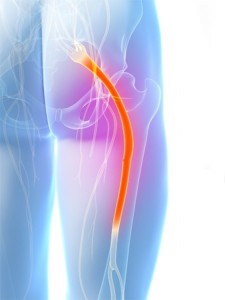
The sciatic nerve
Good that you are here
With the recommendations and exercises on this page, you can achieve amazing results. Do you want to get started with exercises right away and do you have a smartphone or tablet? With the exercises in the app you can quickly recover from sciatica!
Best rated (4,7 stars!) and most downloaded back pain app in the Netherlands!
The app has been around for 5 years in the Netherlands. The rating by its users is very positive: 4,7 on a maximum of 5 stars! Experience it for yourself!
Are you ready for the most useful tips to cure sciatica? A back without stiffness and pain is within reach!
First I’ll give you more information about sciatica and its symptoms. Then I will discuss the causes and treatment of sciatica. With an exercise program you can get rid of it yourself. At least, I assume that you want to know how to cure sciatica.
Do you choose to recover quickly? Feel free to start with a couple of very effective sciatica exercises. Play the video and enjoy practicing!
Sciatica symptoms
What are the sciatica symptoms and how do you recognize them? The symptoms of sciatica include radiating pain with numbness or tingling in the leg, foot or toes. Many people experience this kind of back pain. The radiating pain in a buttock or leg often goes hand in hand with pain in your lower back. So you feel pain in your lower back and legs. Sometimes you also have loss of strength in a leg. Just like with a herniated disc, sneezing, coughing and pressing can cause pain.

Sciatica complaints
The characteristics of sciatica during your daily life are pain and stiffness during a long sitting posture. Many people have back pain when sitting. Bending down or lifting also causes complaints. These sciatica symptoms often start as early as getting up from bed. It can feel as a nagging, stinging or burning pain.
Where do these annoying symptoms come from? There are various causes that can lead to sciatica.
Sciatica causes
Sciatica is sometimes confused with throwing your back out. That is because this back pain sometimes radiates to a buttock for example. We call this a radiating nerve pain. Ischialgia is common on the right as well as on the left.
Sometimes a nerve that runs from the back to your legs is oppressed or irritated. This is called sciatica. It can happen in various ways. Think of your muscles in your lower back or buttock. Also a wrong posture, pregnancy, obesity, osteoarthritis, inflammation of the nerve, narrowing of the spinal canal or a herniated disc can be causes.
An overload of your sacro iliacal joints can also cause irritation of the sciatic nerve. These are also called the sacrum joints. Read more about the SI joint and the exercises to reduce your symptoms at home.
More severe than low back pain
Sciatica is a common cause of pain and disability. What a lot of people do not know, is that sciatica is more persistent and severe than low back pain. Consequently, the outcomes are also less positive. Patients with sciatica are also using more health resources (Konstantinou, 2008).
What to do with sciatica?
What is the best therapy for sciatica? You will read more about this later on. Before I let you know what you can do against sciatica, I will first give you more insight into the complaint. There are several risk factors for the development of this back pain. In the scientific literature as in this publication (Tayler, 2014) it is stated that a heavy physical strain and a bad condition are risks. The study also shows that lifting something heavy and also turning or bending your trunk is a risk.
It is important that you have understanding about these risks. As soon as your sciatica symptoms diminish, it is tempting to return to the old way of life. Sciatica can therefore easily return. More knowledge about sciatica is important. Now that you have more knowledge about your complaint, I would like to tell you what the best sciatica therapy is.
Sciatica treatment
In the event of severe back pain or an increase in symptoms, the GP can give advice. This is usually advice about pain relief, warmth and medication. Painkillers or surgery usually do not improve the situation. The doctor advises you to do exercises. It is also important for the treatment of sciatica to pay attention to your posture. If you have trouble with this yourself, a physiotherapist can help you.
Read on and find out what a favourable posture is and what you can do yourself to solve sciatica.
On the basis of scientific research, the quiet building up of activities seems very important to cure sciatica. You can do this by walking and doing exercises.
Relieve sciatica pain
The experts agree. It is important to know what sciatica is so that you will build up your activities in peace. This can relieve sciatica pain. The recovery period is different for everyone. If you understand what sciatica is and have insight into your symptoms, you can quickly get rid of sciatica pain. Anyone can heal from sciatica.

What can you do yourself?
People with sciatica often have a fear of moving because of back pain. It is a logical reaction to be less active because of your back pain. At first this is not so bad. You can take it easy for a day. Maybe the pain will decrease for a while. However, rest is not the solution for this condition. Inactivity can worsen the symptoms.
In sciatica there is a nerve pain. Therefore, normal pain relief does not always help. It is often not necessary to take medication. With warmth, a good posture and exercises, you can do a lot yourself against sciatica. Regular walking also often offers some relief. In most cases there is no intensive treatment or medication needed.
Does a massage help with sciatica? A massage can reduce muscle tension and improve blood flow. The symptoms of sciatica may be gone for a while, but it is not a good therapy for the long term. It is important to treat sciatica at its source. Which therapy is suitable for sciatica and what can you do yourself?
Keep moving and practicing
Recent research from the Free University of Amsterdam shows that you should stay active with sciatica and do exercises. This is the best strategy to deal with lower back pain yourself, even if it causes a temporary increase in sciatica pain. Furthermore, the research shows that besides exercises, it is important to keep yourself busy with work and hobbies every day.
Sciatica treatment heat
With sciatica you often see a high tension of the muscles. By taking a warm bath, using a warm jug or wearing a shirt you will reduce muscle tension. Tense muscles feel hard. Heat causes muscles to relax. A warm bath with sciatica is therefore recommended!
Some people have positive experiences with a heat cushion. This is a cushion containing cherry stones. The special thing about these pits is that they retain heat for a long time. You put the heat cushion on the sore spot in your lower back. Then the heat from the pillow slowly goes into your back muscles.
Heat reduces pain
Almost all people with sciatica experience a reduced pain during heat. Why does heat treatment with sciatica help? This is because heat promotes blood circulation. Heat causes muscles to relax. A consequence of relaxed muscles is that joints move smoothly again. This is beneficial for the recovery of sciatica.
A sciatica treatment with heat is therefore a good first start. Your back muscles can relax. The blood ciculation in your muscles will improve. As a result, your relaxed muscles encourages you to move around more, which is good. When it comes to sciatica it is important to keep moving within your own pain threshold.
Read on and get to know the first exercises against sciatica!

A pleasant posture
It is often difficult to find a good posture in relation to sciatica complaints. This is mainly due to the stiffness in your lower back and around your SI joint. Usually, a supine or prone position is most comfortable. With a lying position nothing is wrong. Compared to a sitting position, it puts much less pressure on your vertebrae.
A relaxed lying posture can even relieve your complaints. Just lie down and then slowly relax your body from the bottom up. So first relax your feet and work slowly through to your head. Continue breathing calmly. Is your body completely relaxed?
Prevent a prolonged sitting posture
With the right posture, you can reduce sciatica complaints. Pay attention to a correct sitting posture. Your spine will have a nice S-shape. At the bottom of your back, the spine is more concave than at the top. In this posture, your vertebrae ‘stack up’ most favourably. Also learn to relax in an upright sitting position.
Low back pain usually decreases as soon as you know how to deal with it. These are just a few rules you should know. A sitting position, for example, puts pressure on the sciatic nerve. Therefore, try to prevent a sitting position that has sagged.
Sometimes it is difficult to avoid a sitting position. For example, do you have an office job or another sitting profession? Then change your posture regularly. Interrupt your work and take a short walk. This will prevent a prolonged sitting posture and thus an increase in sciatica complaints. Did you know that there is also a good exercise from a sitting position?
Sciatica treatment exercises
Movement and exercises contribute to relieving pain in sciatica. Make sure that muscles relax and the pressure on the sciatica nerve decreases.
Concentrate on the source of your sciatica symptoms. Posture and responsible movement are the key words for a quick recovery.
So, that seems enough information to me. It is time for the most important exercises against sciatica! Are you ready for them?
Posture and responsible movement
Experts agree. Active movement is the best treatment for most back pain. AudioFysio’s exercise program helps you to recover quickly.
AudioFysio’s self-help exercise program allows you to work at home on your recovery and reduction of sciatica pain. With your own online exercise program you can do various exercises for your lower back. These are proven exercises in physiotherapy practice, such as:
- exercises for a better posture
- mobilizing exercises
- muscle strengthening exercises
- stabilizing exercises
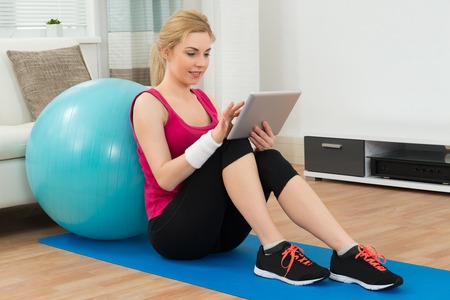
Your own practice program
In your online practice program and in the app you can move in a responsible way. The carefully designed exercise sessions, let you work on your recovery at home. It is not necessary to continue to live on with sciatica complaints any longer. With the exercises you know exactly what to do. All you have to do is start at home immediately.
This way, you decide when you will receive the care for sciatica. You can start the exercise program online right away or start it via the app!
You will find the exercise program very useful. Experience you can relieve pain caused by sciatica complaints yourself.
Sciatica exercises
You need to find out which daily activities cause back pain. For example, are you at a desk every day? A seated posture is a heavy burden on your back. A healthy body needs daily exercises.
In case of sciatica, move within your pain threshold and pay attention to your posture. AudioFysio’s Lower Back Pain Program helps you!
Sciatica? Keep moving!
As said, it is wise to pay attention to your posture. Long-term sitting usually causes an increase in your symptoms. The nerve can become more irritated. Also make sure that you don’t take a standing position for a long time. It is also best to avoid heavy lifting. In its standard Lumbosacral Radicular Syndrome, the Dutch General Practitioners Association (NHG) also advises dosed movement. Bed rest does not promote recovery.
Walking with back pain
Besides doing exercises, it is good for your lower back to walk. Try to do this for at least half an hour every day. You can build a walk into your day pattern. For example, walk every morning immediately after breakfast. Are you at the lunch table during the break from work? Turn this into a walk as soon as possible! You will find a collegue who wants to walk with you.
Walking is good for your back and for a healthy lifestyle. There are many advantages to be mentioned. Think of the relaxing effect, preventing high blood pressure and cholesterol. A daily walk also reduces the risk of cardiovascular disease. Do you want to walk during the break from work? This is highly recommended. After a short walk you will be more productive!

Further treatments of sciatica are scientifically substantiated to a limited extent. The most important scientific literature leaves no room for misunderstanding. Do sciatica exercises as long as your symptoms allow it.
Online practice program
With your own practice program you can move in a responsible way. Where and when you want it. It is exactly what you need. The best sciatica exercises are attuned to each other, so that you achieve an optimal result. Within a few days you will relieve your sciatica pain. Then you strengthen and stabilise the spine. This will prevent recurring complaints in the future.
All people with sciatica complaints really want to get rid of them. Yet for some it is tempting to choose the easiest choice. That is the choice to wait and postpone. Do you choose that? No problem. You are the boss of your own body. But please realize that you will not have a chance on a quick recovery.
You have read information on the website and got acquainted with a first exercise. That means you are ready for the next step! Are you curious about the exercise program? Then proceed immediately!
Delay in recovery
- a poor general condition and health,
- old age,
- stress and depression or
- heavy physical work.
Which sciatica exercises?
With sciatica it is important to increase the mobility of your lower back. That is why it is wise to practice. By practicing you increase this mobility. Besides sciatica exercises you should also pay attention to a deeper located buttock muscle called piriformis muscle. This is often the cause of sciatica complaints.
Take a look at one of the exercises against sciatica.
In the video you have seen how to stretch the piriformis. As soon as you feel the stretch in this deeper located buttock muscle, you can hold it for 8 seconds. Regular stretching of the muscle provides relaxation and an increase in flexibility. What does the piriformis muscle actually have to do with sciatica?
To help you take your first step, here are some exercises against sciatica.
Piriformis syndrome
Sciatica complaints can be caused by the piriformis syndrome. In your buttock runs a muscle called musculus piriformis. Through this deeper buttock muscle runs a nerve. This nerve is called the sciatic nerve. The nerve transmits signals to the central nervous system and provides feeling and movement of your leg muscles such as the hamstrings.
If your buttock muscle feels tense and hard, it can press on the nerve. The result is usually pain in the buttock region with radiance in your leg.
Stretching piriformis
Reduce complaints as soon as the muscle tension of the piriformis decreases. A massage of this deeper located buttock muscle usually provides some relief. Exercise therapy with mainly mobilizing and stretching exercises helps. The piriformis syndrome can be tackled directly at the source by doing the training program.
Possible cause: herniated disc
A hernia is an important cause of sciatica, but how does a hernia actually occur? This has everything to do with damage to an intervertebral disc.
Your body has a spine with 33 or 34 vertebrae. In between runs a channel with spinal cord. The spinal cord is part of the central nervous system. Your vertebrae protects your spinal cord. In addition, the vertebrae carry your weight. Between 2 different vertebrae is an intervertebral disc located.
Intervertebral disc
The intervertebral disc is also called a discus. This disc can be seen as a flexible shock absorber between your vertebrae. Shock absorption is an important function. Unfortunately, the ability of shock absorption decreases with age. This can cause chronic back pain to some people.
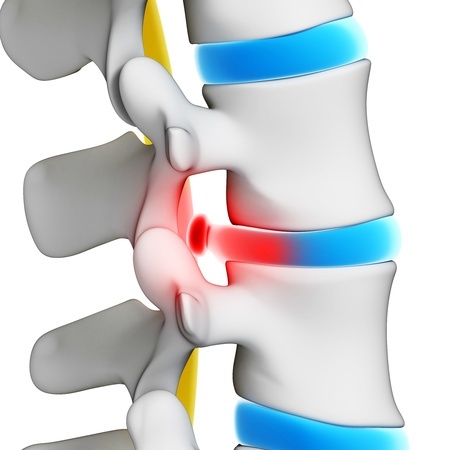
Damage to the intervertebral disc
An intervertebral disc contains a soft jelly inside. This mass is called the nucleus pulposus. The outer layer consists of connective tissue. If the inner filling bulges out, we call it a herniated disc. You have probably heard of it before. The protruding herniated disc can press on a nerve root. It can bring, besides low back pain, a nerve pain that radiates to the buttock or legs.
A herniated disc is mainly found in the lower back. The diagnosis of a hernia and sciatica are sometimes used interchangeably. This is because the complaints of a herniated disc in the lower back sometimes resemble those of sciatica.
The real way to get a pain-free back is no longer to wait, but to start immediately. Leave your expectations, fears or doubts behind and simply start. Once you have started the exercise program, you suddenly notice that your back has become more supple and less painful.
I think you have become curious about the exercise program. Let’s move on immediately!
Bella’s Lower Back Pain App
The sciatica practice program is also available in the App Store and Play Store. With the app you follow a physiotherapeutic program to recovery. Physio coach Bella tells you step by step what to do. You’ll see that your back pain quickly disappears with the exercise program.
The app is highly appreciated and that makes us enthusiastic! Are you also participating?
Literature
Balagué F, Mannion AF, Pellisé F, Cedraschi C. Non-specific low back pain. Lancet. 2012;379(9814):482–91.
Geneen LJ, Moore R, Clarke C, Martin D, Colvin LA, Smith BH. Physical activity and exercise for chronic pain in adults: an overview of Cochrane reviews. Cochrane Database Syst Rev. 2017;(4):CD011279. (2011).
Philippine Academy of Rehabilitation Medicine: Guideline Low back pain management. Accessed June 2017.
Konstantinou, K. Sciatica: Review of Epidemiological Studies and Prevalence Estimates 2008.
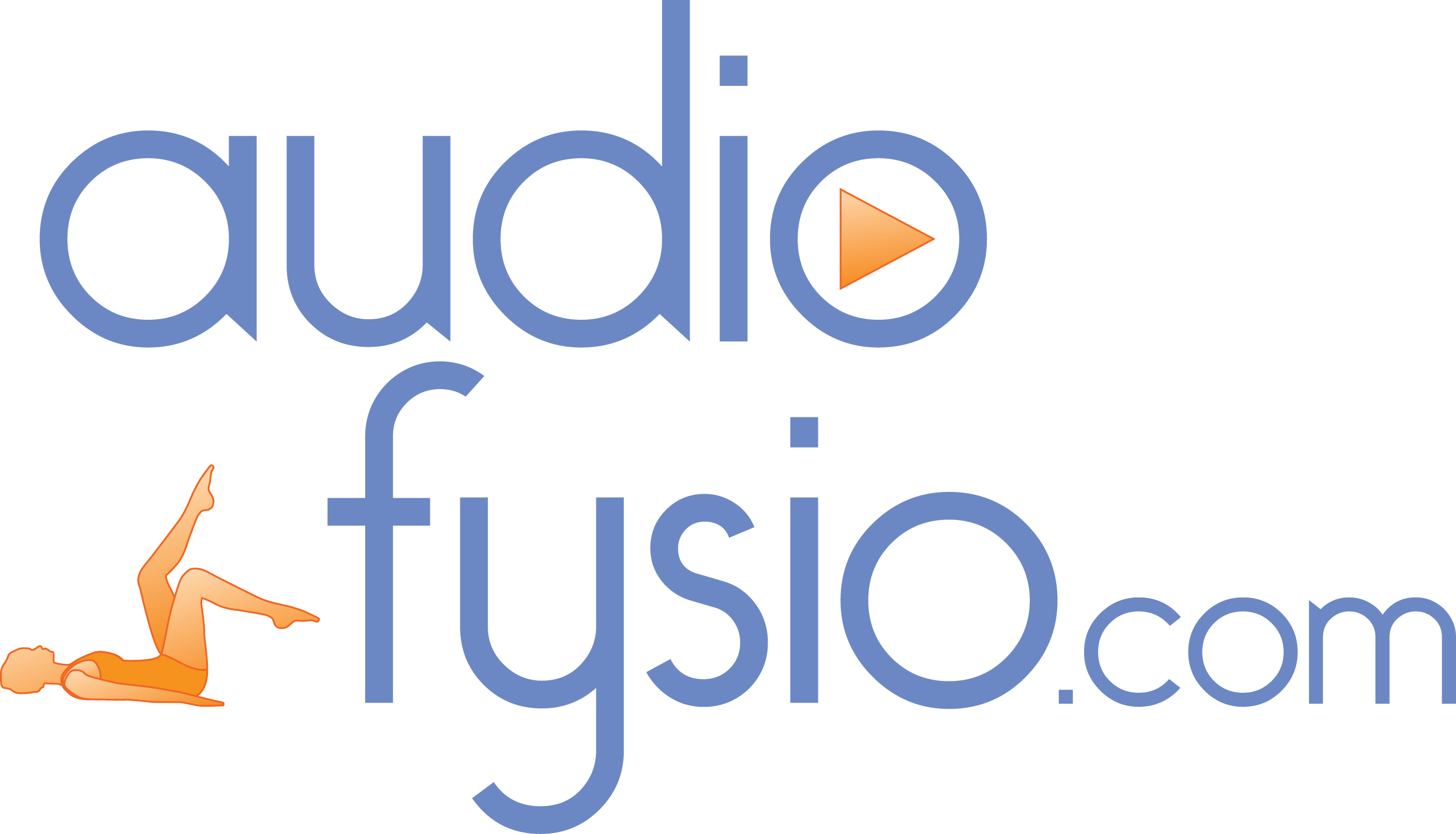


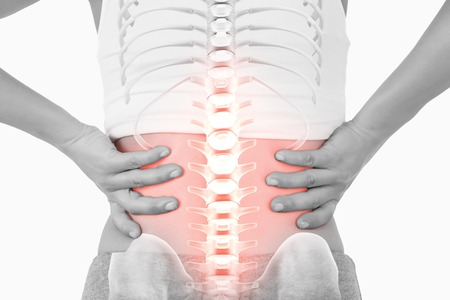

 P. Arentsen, CEO AudioFysio
P. Arentsen, CEO AudioFysio
 Hans
Hans
 Betty
Betty